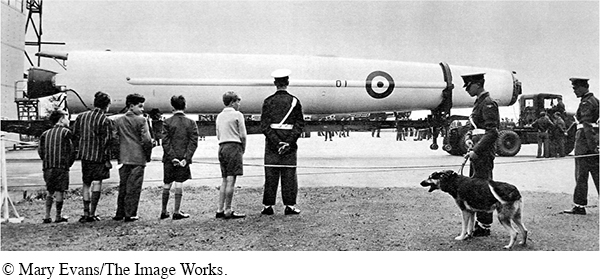The American Promise: Printed Page 777
The American Promise, Value Edition: Printed Page 706
The American Promise: A Concise History: Printed Page 804
The “New Look” in Foreign Policy
Eisenhower was determined to control military expenditures in order to balance the budget and cut taxes. Reflecting American confidence in technology and opposition to a large peacetime army, Eisenhower’s “New Look” in defense strategy concentrated U.S. military strength in nuclear weapons and missiles to deliver them. Instead of maintaining large ground forces of its own, the United States would arm friendly nations and back them up with an ominous nuclear arsenal, providing, according to one defense official, “more bang for the buck.” Dulles believed that America’s willingness to “go to the brink” of war with its intimidating nuclear weapons—

Nuclear weapons could not stop a Soviet nuclear attack, but in response to one, they could inflict enormous destruction. This certainty of “massive retaliation” was meant to deter the Soviets from launching an attack. Because the Soviet Union could respond similarly to an American first strike, this nuclear standoff became known as mutually assured destruction, or MAD. As leaders of both nations pursued an ever-
Nuclear weapons could not roll back the iron curtain. When a revolt against the Soviet-